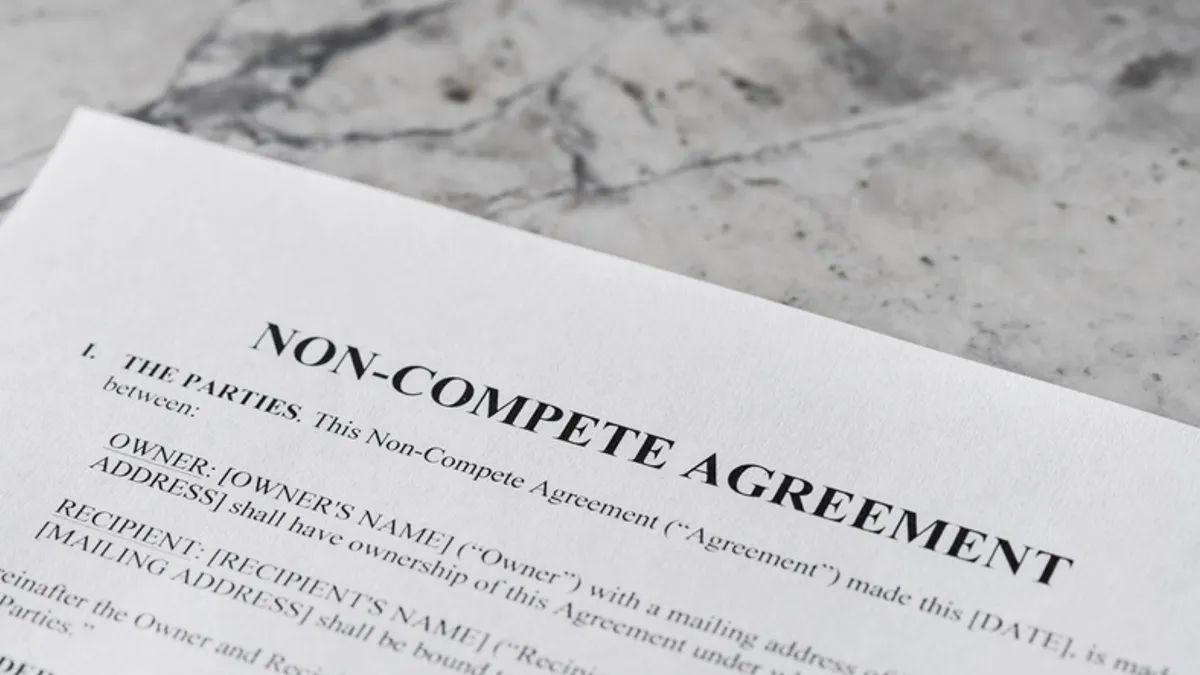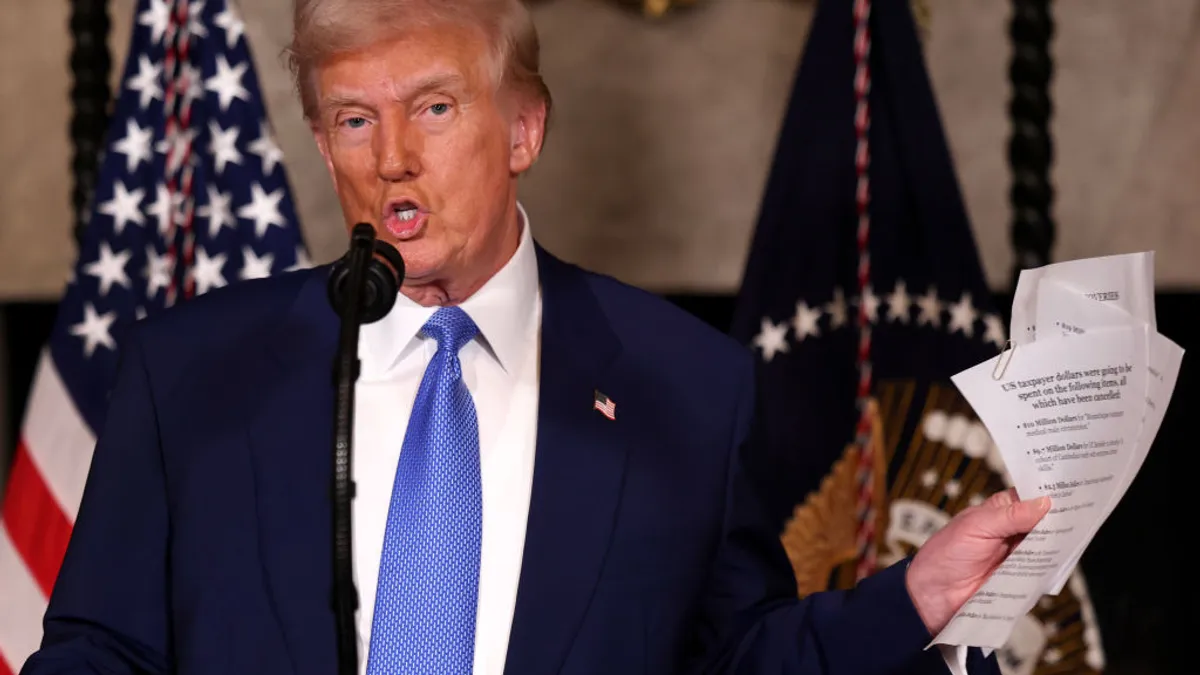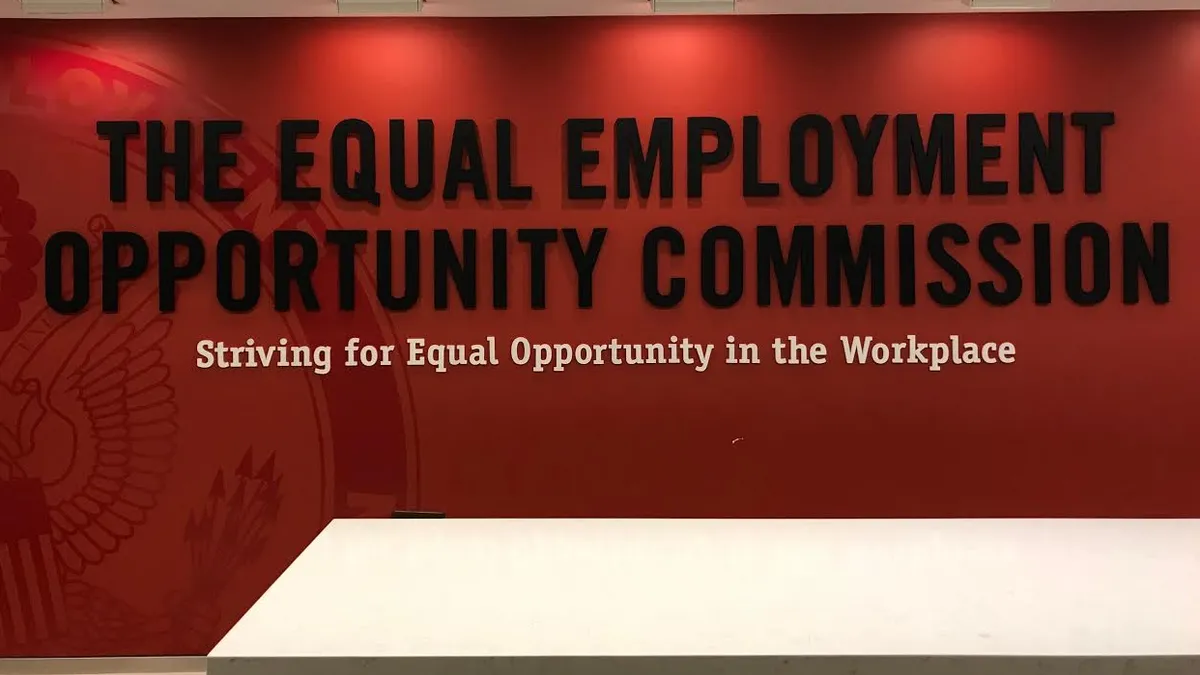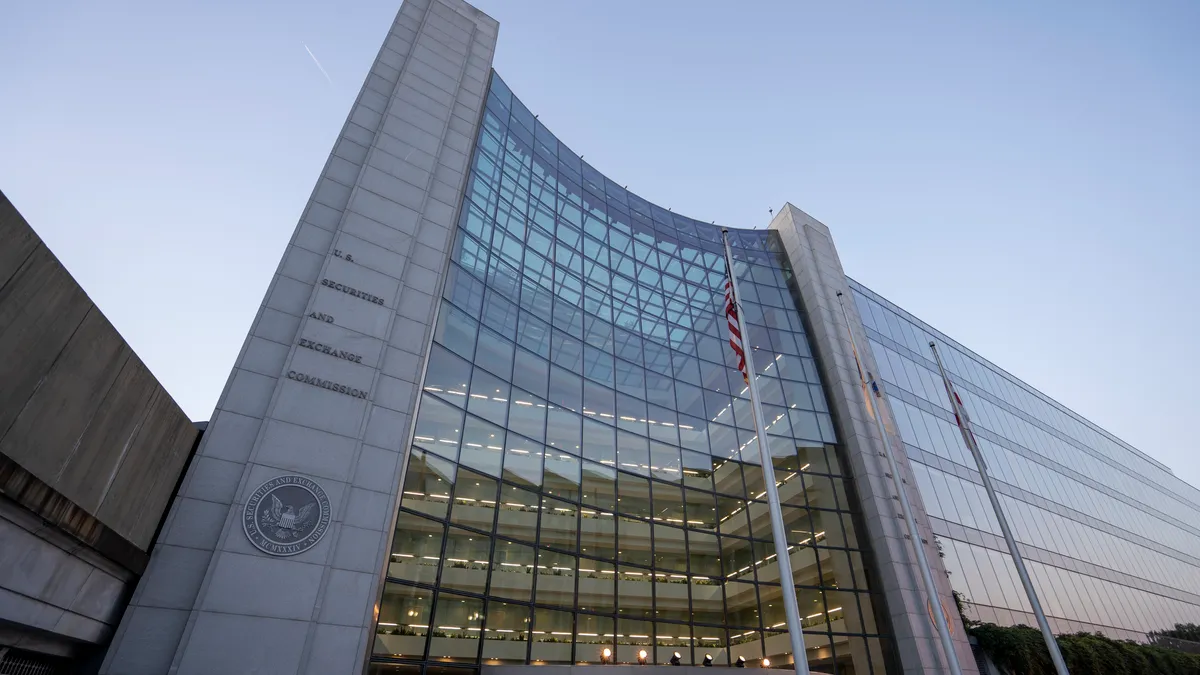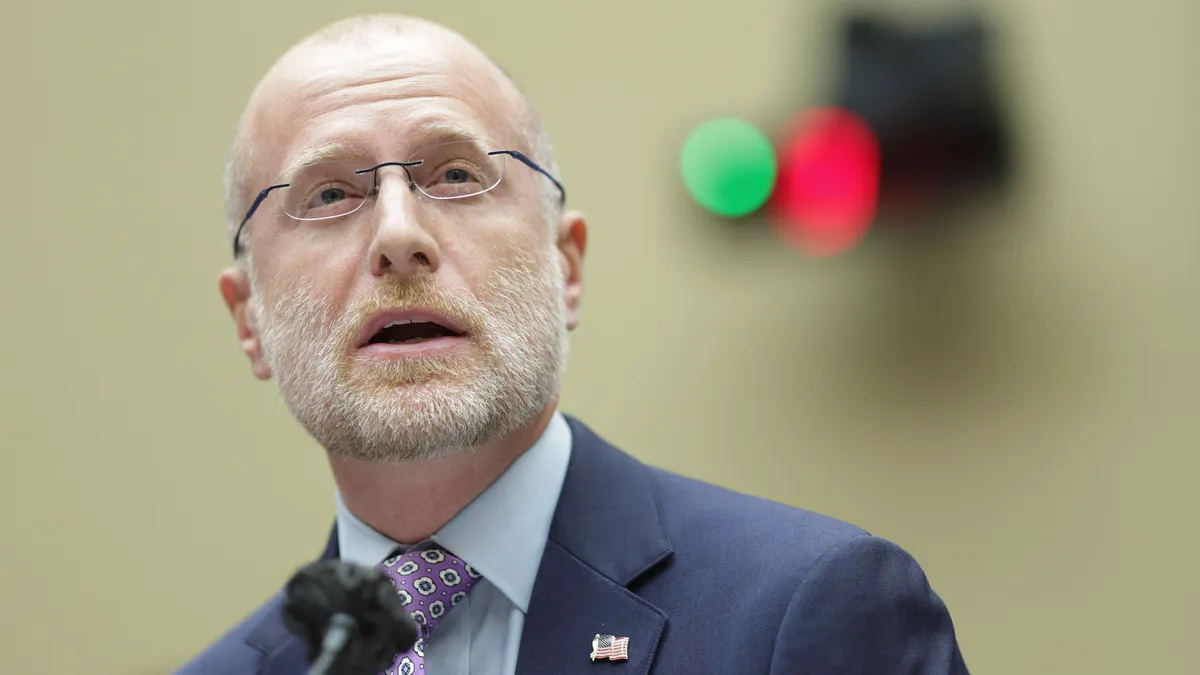The start of any administration in Washington means regulatory change as the incoming team tries to enact the new president’s agenda. But this year will be unusually uncertain as companies leverage the flexibility they’ve been given by the Supreme Court, which last year overturned decades of regulatory precedence in several landmark business decisions. With agency deference on rulemaking gone, among other things, in-house counsel can expect to spend more time than usual understanding the compliance environment their company faces.
Counsel can also expect states to be more activist as part of an increasingly ideological battleground as state attorneys general sue other states in a way that will shape companies’ business strategies. State prosecutors gave a glimpse of what’s to come when a group of conservative-leaning states last year sued a group of progressive-leaning states for the impact their climate laws are having on oil companies and the U.S. energy sector.
Artificial intelligence will continue to be front and center, too. In-house legal leaders will be under the gun to show the money they’re spending on new tech tools is generating a return on investment and not just diverting resources that could be used elsewhere.
How successful the tools are could end up depending on how skilled the legal team becomes at crafting AI prompts. Perhaps more than with other tech tools, the success of generative AI will depend on the quality of the prompts that are used, so skill in that area could become decisive in who general counsel decide to hire this year.
Here is Legal Dive’s take on these and other topics in-house counsel and legal operations professionals can expect to dominate the conversations in the media and in their workplaces this year.
1. Federal regulations in flux
U.S. presidents Joe Biden and Donald Trump have little in common with regards to their political views or the role of government regulation in corporate business.
That striking contrast, coupled with significant Supreme Court rulings in 2024 affecting regulated companies and a fresh assault on regulations by Trump’s political allies, will make 2025 likely a year of tectonic change for federal regulation.
General counsel, and their outside firms, will be tasked with keeping abreast of what’s likely to be a vigorous and dynamic era in Washington, from a flurry of executive orders and new executive branch rules to Elon Musk’s government downsizing effort.
Trump will enjoy Republican control of Congress for the first half of his term, making his agency nominees and the parts of his agenda subject to legislative oversight more likely to be installed.
Adding to the regulatory flux of a new administration, the Supreme Court injected uncertainty into the U.S. regulatory state with a trio of momentous rulings last year that heavily curtailed agencies’ powers and provided litigants new avenues to oppose federal rules.
Those decisions — Loper Bright Enterprises, Jarkesy and Corner Post — shifted authority from the executive branch to courts. The Loper Bright case ended 40 years of judicial deference to agency expertise on statutory questions, while the Jarkesy ruling against securities regulators curbed the use of administrative court proceedings.
The Corner Post decision extended the time period in which plaintiffs can sue a regulatory agency for harm under the Administrative Procedure Act, effectively abolishing the six-year statute of limitations on litigating over new rules.
Trump’s cabinet selections for his second turn as president are more aligned with perceived loyalty to the White House than for prior experience in areas their department oversees.
For example, former Rep. Lee Zeldin, whom Trump chose to run the Environmental Protection Agency, was in the Army and then worked as a lawyer before serving as a state and U.S. representative for 13 years. Former Rep. Sean Duffy of Wisconsin — a former state prosecutor and Trump’s choice to oversee the Department of Transportation — has worked as a lobbyist and Fox News personality since he left Congress in 2019.
That means those department leaders, and others, are likely to defer to Trump’s priorities compared to reliance on their own established views of environmental or transportation policy from past experience.
There is also the unknown sway of Project 2025, the policy document formulated by the Heritage Foundation, which outlined how the federal government could be reshaped under a second Trump presidency. One of the authors of that document, Russell Vought, is Trump’s director of the Office of Management and Budget.
All of these elements will mean a steady flow of changes from Washington — some of them substantial — and the need for constant vigilance by GCs.
2. State litigants
One of Trump’s signature goals, beyond broad changes to immigration, trade policy and the economy, is to shrink the size of the federal government. Trump allies have mulled ways to abolish entire agencies, including the Consumer Financial Protection Bureau and the Department of Education.
Trump has also empowered billionaire Elon Musk and Vivek Ramaswamy, a former rival in the Republican primary, to streamline the government with a proposed commission called the Department of Government Efficiency. Trump is tasking the group to identify and eliminate wasteful spending across the U.S. government, with cuts to the federal workforce among some of the commission’s first plans.
This shrinking of government, and its regulatory apparatus, will empower states to step in wherever they believe the federal government is failing to address a regulatory matter.
Some states, led by California, are already mobilizing new legal budgets to battle Trump, much as states like Texas and Florida frequently sued the Biden administration.
“Have no doubt that attorneys general will fill that void,” Todd Jones, a commercial litigator and former U.S. attorney, told Legal Dive in September, discussing how a Trump victory would affect federal regulatory agencies. “That creates a whole set of challenges for industries and companies that operate in multiple places.”
Attorneys general in so-called blue states, and advocacy organizations, “will become friends with the major questions doctrine and the death of Chevron,” Martine Cicconi, a partner at Akin Gump and co-lead of the firm’s state AG practice, said in November at a Federalist Society panel discussion. Chevron refers to the Supreme Court’s 2024 Loper Bright Enterprises ruling, which ended judicial deference to an agency’s interpretation.
In recent years, many state AGs, including those in Iowa and New Jersey, have also bulked up their staff with lawyers who have litigation experience.
Many states have begun asking “what is the legal landscape going to look like and what are some of the opportunities” to litigate following Biden’s agenda, Iowa Attorney General Brenna Bird said at the Federalist discussion on business during the next Trump administration.
States aligned with Trump’s agenda will begin serving as “a counterbalance on the other side” against states and groups that seek to hold companies responsible for various policy targets they’ve issued previously, such as carbon emissions, diversity and ESG issues, Bird said.
Other states, such as California and New York, are likely to be defendants over any “social engineering” efforts in their state laws or regulations that would affect business in other states, she said.
States will also do more investigations “when it comes to issues like ESG and DEI to be sure to root those things out so we don’t have things other than fiduciary duty being taken into account,” Bird said.
A wave of interstate litigation is a topic that corporate legal executives and their outside firms will likely find relevant this year.
3. Merger consent decrees to return
The Justice Department and Federal Trade Commission, more than in the recent past, will be open to structural remedies to get merger deals through, although Big Tech will still face a rough road, an antitrust specialist says.
The two agencies largely abandoned the use of consent decrees to get mergers through during the Biden administration but those are likely to return under the Trump administration, Jeremy Morrison of Cooley told Legal Dive.
To the extent the use of decrees return, companies can approach deals with some confidence that they can devise a solution if competition concerns are raised, said Morrison, a partner at the firm and an antitrust attorney at the FTC during the Obama administration.
“The administration will likely get back to the idea that not all mergers are bad, and move merger enforcement more generally to the middle, where it was for decades,” he said.
The 2023 merger guidelines that the agencies released jointly will likely go away, Morrison said. Antitrust specialists view these guidelines as aggressive because they push theories about serial acquisitions, conglomerate effects and multi-sided platform issues, among other things, further than past administrations and courts have tended to go.
The theory about conglomerate effects, for example, suggests a deal can be anticompetitive even though the two companies operate in separate markets. It’s not that past administrations and courts never looked at that effect, Morrison said, but they didn’t default to the idea that it was bad.
“Courts just weren’t really accepting their theory,” he said.
It’s unlikely the agencies will simply scrap the 2023 guidelines, Morrison said. More likely, they’ll start a process with an eye to creating something new that keeps what works from 2023 and get rid of what doesn’t.
The parts that they keep will likely be those that help them deal with Big Tech. Companies like Google, Amazon and Apple, among others that dominate the digital economy, raise competition issues that are different from what are traditionally looked at in horizontal and vertical mergers because of what might be called platform effects. The term refers to the way tech companies can shape economic activity based on the way their platforms connect market participants.
Both the first Trump administration and the Biden administration have approached these companies aggressively and that’s expected to continue.
“There may be pieces in there that they want to pull out and use in their toolbox,” he said. “That’s where you can see a revisiting of the guidelines to cabin something, but not throw everything to the side.”
Guideline 5, for example, which talks about a company using its dominance in one area to prevent a rival from getting access to resources it needs to compete in another area, is one section that could remain in the upcoming Trump administration.
“That’s going to be one that could come into play,” he said. “The ideas come out of traditional vertical theories but they can get applied to Big Tech.”
The three people Trump has named to oversee antitrust — Gail Slater to head DOJ’s antitrust division, Andrew Ferguson to chair the FTC and Mark Meador to join the FTC as a commissioner — are familiar with regular order and yet appreciate the unique issues Big Tech raises. That suggests they could take a middle-road approach in most instances while applying some of the outgoing administration’s more aggressive tools to Google and the others.
“Because of their focus on Big Tech, they [could] keep some of those pieces from the 2023 guidelines that they can use in that arena,” he said.
4. Genetic privacy law to snare unwary employers
Companies received a breather last year after lawmakers in Illinois modified the state’s Biometric Information Privacy Act to curb what critics called wildly expensive damages that plaintiffs attorneys were trying to get.
But now that the law has been tamed, there’s a good chance companies could start facing aggressive lawsuits under another privacy law in the state: the Genetic Information Privacy Act. Although BIPA and GIPA are confined to Illinois, other states are watching what’s happening with these laws because the state has been a leader on these types of privacy protections.
GIPA has been around since 1998 but starting last year dozens of proposed class action lawsuits have been filed, in some cases against employers who were surprised to learn they were at risk of violating the law. Under GIPA, genetic information isn’t just the data that’s collected from a person’s blood or other tissue sample; it can also be the information that’s provided when people answer health questionnaires about their family’s history of diseases or disorders.
“Arguably, checking the box on an intake form on what your family’s medical history is” would be considered genetic information under the law, employment law attorney E. Jason Tremblay of Saul Ewing told Legal Dive.
Companies that require health screening of new or existing employees because of the physical requirements of the job could be at risk of violating the law if they’re not careful how the screening is conducted by them or the third-party provider they hire.
“They may not know what these third-party providers” are collecting, Tremblay said. But if a questionnaire they’re using asks about family history, “that’s arguably a violation of this act. That’s where I see these cases being filed. That’s the nature of the cases that are starting to explode.”
Both BIPA and GIPA include a private right of action. Under GIPA, the employer or health insurer or other entity collecting the information can be liable for damages of up to $2,500 per violation. If intentionality or recklessness is found, the penalty could be up to $15,000, or actual damages, per violation. That’s more than what’s possible under BIPA.
As with BIPA before the law was amended last year, it’s not clear how “per violation” is determined. Is it every time an employee is asked about his or her familial history — which could be multiple times if health screening is done regularly — or is it just one violation per employee?
Before BIPA was changed, courts interpreted the law to find a violation every time someone’s biometric information — fingerprints and eye scans, for example — was recorded. That meant there was a violation every time an employee had his fingerprints scanned when he clicked in and out of work or took a break. The law changed this to clarify that it was only one violation per employee.
It was the potential for repeated violations before the clarification that led plaintiff’s attorneys to go after employees under BIPA in a big way, according to critics.
“Before the amendment, BIPA would allow essentially a statutory amount of [$1,000 or $5,000] per violation, which courts construed as any time an employee would put their fingerprint on a timekeeping system,” Tremblay said. “That could happen four or five times a day for five years. At [that amount], you can imagine what that leads to, and it also allows for attorneys’ fees.”
That level of repeatability isn’t possible under GIPA, because employees aren’t tested multiple times a day for multiple years. What’s more, it’s likely courts will interpret GIPA based on the change made to BIPA, which could mean employers would face just a single violation per employee. But the per-violation damage amounts are higher, and attorneys can get their fees paid as well. So there’s plenty for plaintiffs’ attorneys to go after.
Tremblay said he recommends to his clients they leave out family history questions if they conduct employee health screenings.
“They can avoid this by making it clear they’re not requesting, and whoever is doing this for them is not collecting, that familial history information,” he said.
5. AI investment — and returns
Few topics generate as much discussion in corporate legal circles as artificial intelligence tools and the role they’ll play in automation and efficiency efforts.
The industry has invested increasing sums for AI resources in recent years, and many general counsel are already seeing cost savings.
The appetite for AI integration is clear: Nearly a third of in-house departments have implemented an AI tool and more than half (54%) are considering adding one or more AI tools in the next 12-24 months, according to an annual survey of 186 law departments by Harbor Global and CLOC, released in December.
A full quarter of in-house legal professionals said generative AI has already saved their departments money, according to a survey by the Association of Corporate Counsel and Everlaw released in October. And almost half (49%) said they expect AI tools will yield financial savings.
A separate survey on 2025 legal department budgeting, by Axiom Global, the alternative legal service provider, found that 96% of GCs expect AI tools will "meaningfully" trim costs. Technology was the largest area of investment this year, with 44% of GCs’ budgets marked for tech.
This quest for greater automation within legal departments comes as GCs are seeking to address their teams’ growing workloads and to tame outside counsel expenses. A large majority of legal leaders — 83% — expect continued growth in demand for legal services, with “managing the workload and bandwidth of internal resources” the top challenge for nearly two-thirds of respondents in the Harbor survey.
“The pressures faced by corporate law departments today are very real,” Lauren Chung, Harbor’s survey editor and practice lead for strategy + transformation, said in the company’s press release.
GCs are also helping drive AI adoption among their outside firms as a way to control rising costs. AI tools will no longer be optional for law firms but “a foundational component of daily operations,” according to Leopard Solutions, a data supplier on the legal market. “Firms who fail to adopt and adapt will find themselves falling irreversibly behind their competition,” founder Laura Leopard said in a blog posting.
After several years of pilots and experimentation, many legal and financial chiefs are fully committed to a significant role for AI in their in-house legal departments — and they’ll want to start seeing returns on the investments soon. This might well be the year that many GCs and CFOs begin to insist those returns start showing themselves.
6. Prompting will be a differentiator — and an IP battleground
The copyright battles over the data that companies use for training their generative AI tools are well underway. Among other lawsuits, OpenAI is fighting authors and other content creators over its use of their work. But there’s another legal area that’s ripe for litigation, according to intellectual property specialists: whether there are protectable rights attached to the prompts that users input into their AI tools to create outputs.
“Whether the instructions given by the user to AI to generate the desired content … can be protected through intellectual property” is a question that IP attorneys have started asking, Violeta Arnaiz Medina, director of technological intellectual property at global consulting firm PONS IP, says in a piece she posted last year on her company’s website.
The idea shouldn’t be considered outlandish, says Kevin Cohn, the chief customer officer at legal spend software company Brightflag.
“Writing a prompt is the act of building something on top of an LLM,” Cohn said in a look-ahead to 2025 that was shared with Legal Dive. “How smart the thing is that you build depends on your understanding of the use case and how effectively you translate it into a prompt. That’s IP.”
The idea that prompts are works unique enough to protect is likely to be tested first in software development, where engineers are already deep into using generative AI to help them write code. How the AI tool is prompted, and then prompted again to refine the output, and then prompted once more to further refine the output can make the difference in the speed and success of a new product or service, say people who are thinking about this topic.
“When you're asking an AI to build something or perform a task, that prompt … defines the outcome, and in many ways, it's more valuable than the code itself,” Matt Hawkins, CEO and founder of CUDO Ventures, said in a roundtable hosted by The Street.
For in-house counsel whose company competes in software development, understanding this new landscape will be essential for protecting the company’s intellectual property. And it shouldn’t just be thought of as a copyright issue; it should also be thought of as a trade secret issue.
“Prompts used in AI software can potentially be protected as trade secrets if they provide a competitive advantage and are kept confidential,” Ekata Deb, a contracts lawyer, says in an analysis. “For example, a company could develop a set of highly optimized or unique prompts that enhance the AI’s performance and protect them through trade secret law, as long as reasonable efforts are made to keep the prompts secret.”
Software code is the focus of IP specialists today, but prompts used in graphic design and other types of content raise the same type of questions.
Separate from the legal issues, the art or science of prompting is likely to be a skill-differentiator as well. In the in-house context, a lawyer or paralegal who can use prompts to create well-crafted — and accurate — content could be the next stars of the legal team.
“As AI becomes increasingly embedded in legal operations, attorneys who master the art of prompting will have a significant competitive advantage,” Paul Hankin, a technical specialist at the Thompson Coburn law firm, says in an essay.








